Living
by
Protocol
May 17 – July 3, 2022
Harvard Art Museums, Lightbox Gallery
Presented by metaLAB
(at) Harvard & FU Berlin
The use of social media has become a daily routine for billions of people throughout the last decade. The problems and possibilities of this new media reality were reflected and questioned by artists long before its popularization. Cyberfeminism and Net Art layered a foundation as the digital realm as an artistic medium in the early 1990s. Today, contemporary art is almost unthinkable without the network effects of Instagram, Twitter, YouTube, TikTok, and Facebook.
Living by protocol queries the contemporary reflections of artists on, with, and by social media. The nine grid structured monitors within the Lightbox Gallery become a subface onto the social database structures secret of extraction. The program will consist of six weeks of curated, rotating media works and experiments. The show will commence with one week of talks, discussions, and other hybrid programming. Social media will be simultaneously the topic, platform, and space of experimentation.
Mimi Onuoha
These Networks In Our Skin
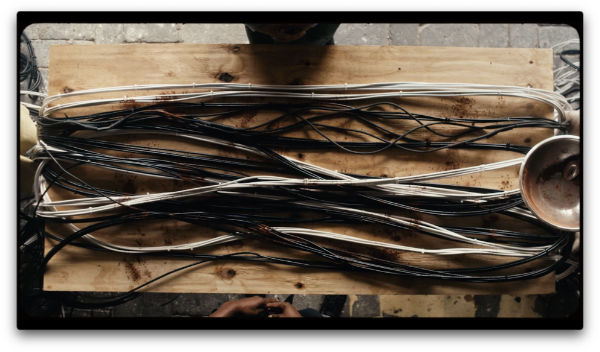
These Networks In Our Skin depicts four women who work to rewire the cables that carry the information that powers the world. Surreal, familiar, and disquieting all at once, the short film draws from traditional Igbo cosmology to offer a dreamlike lexicon of what it might mean to recreate the Internet, starting from the values infused in the cables that make it up.
Film commissioned by Princeton University's Ida B Wells Just Data Lab. Production support provided by Nick Castle, Naliaka Wakhisi, Joti Desour, Georgetta Buggs, Julian Muller, Mathien, Noa Bricklin, Thor Foss, Chase Shamlian, Ahmed Nazim, Jessica Papayiannis, Brooke van Hensbergen, Daniel Orentlicher, Mia Walker, Elaina Castle
Website
Manja Ebert
sleepingsquad
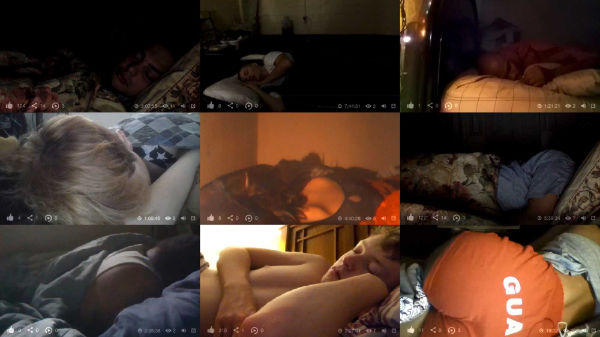
Manja Ebert’s work shows an excerpt of her multichannelmultichannel video installation sleepingsquad (2016). The artist addresses a section on the online portal younow.com, where users stream themselves live while sleeping. Although in a private, unconscious and normally unobserved state, the protagonists actively stage themselves for the camera. Arranged into a group, the isolated sleepers provide an unobstructed view into their private sphere. The streams become a collective sleeping selfie. In this form of self-representation, the actors consciously expose themselves to the situation, defenselessly at the mercy of the others’ reactions. On the platform, viewers can comment on the sleepers, give likes and even donate money. In the voyeuristic moment of viewing, the artist critically examines the social role of social platforms. In doing so, she exposes not only the privacy of the streamers, but also the economics of the internet.
Website
Ben Grosser
Minus
Minus is a finite social network where you get 100 posts—for life. While you can reply to a post as often as you like, every time you add to the feed, it subtracts from your lifetime total. When you reach 0 posts left, that’s it. No exceptions. The feed is reverse chronological, not algorithmic. Post timestamps are vague. Nothing is monetized. There are no likes or follows or noisy notifications. The site’s only visible metric counts down, showing how many posts each user has remaining. How disorienting will it be to interact on a platform that doesn’t try to induce endless engagement from your every waking second? What will you say—or make —when freed from infinite demand? Just like life, Minus has limits. Try it out today and see what online interaction feels like on a social network designed for less.
Go Rando
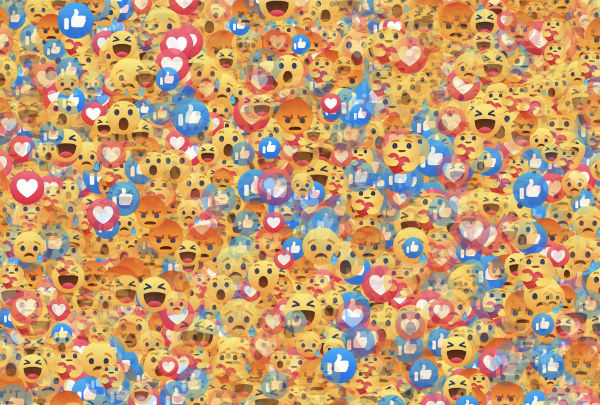
Facebook’s “reactions” let you express how you feel about a link, photo, or status. While such data might be helpful for your friends, these recorded feelings also enable increased surveillance, targeted advertising, and emotional manipulation. Go Rando is a web browser extension that obfuscates your feelings on Facebook. Every time you click “Like”, Go Rando randomly chooses one of the seven “reactions” for you. Over time, you appear to Facebook’s algorithms as someone whose feelings are perfectly “balanced”—as someone who feels Angry as much as Haha or Sad as much as Love. You can still choose a specific reaction if you want to, but even that choice will be obscured by an emotion profile increasingly filled with noise. In other words, Facebook won’t know if your reaction was genuine or not. Want to see what Facebook feels like when your emotions are obscured? Then Go Rando!
Website
Lauren Lee McCarthy
Follower
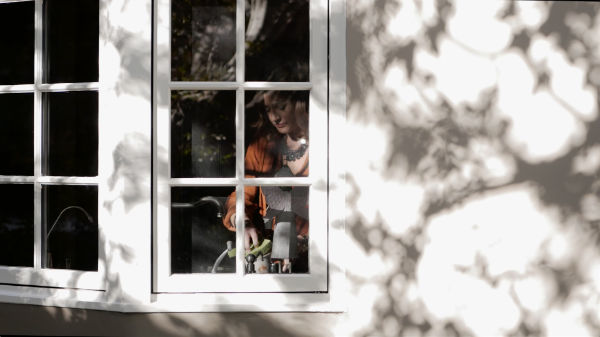
Follower is a service that provides a real life follower for day. In order to be followed, you answer two questions, “Why do you want to be followed?” and “Why should someone follow you?” If you are selected, you are given an app to download, and you wait. You don't know when it will happen. The following lasts one day. At the end, you are left with one photo of you, taken by your Follower. The Follower stays just out of sight, but within your consciousness.
Website
Mirabelle Jones
Artificial Intimacy

Artificial Intimacy depicts LGBTQAI and BIPOC individuals conversing with a chatbot version of themselves that is based on their social media profiles. This project explores: what happens when LGBTQAI and BIPOC individuals become the basis for chatbots based on their social media data? What non-normative values do the chatbots represent and how are these non-normative values incorporated? The project is a response to Alexa, Google Home, Siri, and other normative chatbot programs. The project interrogates gendered and racialized alternatives to these programs through two individuals, one who is trans and non-binary and the other who is a queer black polyamorous individual. The project asks: what values are incorporated into voice assistant programs and how do these values manifest?
Website
Kim Albrecht
Post_Networks
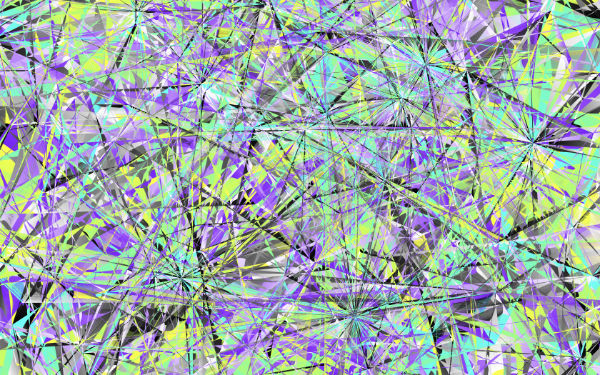
Networks consist of conglomerates of points connected by lines. Two forces allocate their positions. Points repulse each other; they drift away from one another through time. Lines draw points together. A performance without width or thickness of separation and togetherness. Networks segment space, creating borders through their connectedness without occupying the surface. Networks are spaceless entities defined by the power relationship of attraction and separation. Network connections create boundaries without walls.
Post Networks reimagines the web away from the division of space toward a composition of the surface. What if what matters is not the network but the in-between spaces? While lines emerge from the movement of points, areas emerge from the motion of lines through time. Within the experimentations, space becomes occupied by the afterglow of repulsion and attraction. Not the network, but its past movement becomes present. Time collapses within the constant redrawing of the surface the network diverged.
Website
Sarah Newman & Jad Esber
All The Things I Want and Don’t Want

The majority of the global population is on social media, and more people are joining every second. Social media is bad, but it is not only bad. If we didn’t get something from it, or think that we might, we wouldn’t keep using it. It is the “good” that it promises, that it tempts through a very intentional design, that makes it so insidious, addictive, and hard to change. Drawing on self-reported accounts of “best” and “worst” personal experiences on social media, All The Things I Want and Don’t Want is, like the medium itself, light and ephemeral — and yet it is many more things too — and it is hard to look away.
Website Sarah Newman
Website Jad Esber
Winnie Soon
Unerasable Characters II
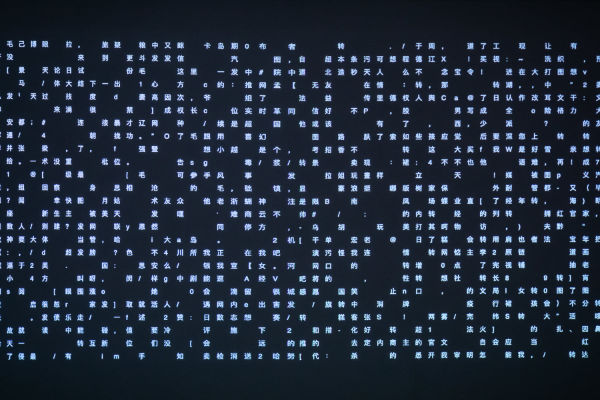
Unerasable Characters II explores the politics of erasure and the temporality of voices within the context of digital authoritarianism. It presents the sheer scale of unheard voices by technically examining and culturally reflecting the endlessness, and its wider consequences, of censorship that is implemented through technological platforms and infrastructure. Consisting of a piece of software script that scrapes the daily erased “tweets” from Weibo, one of the biggest social media platforms in China, the project presents the archives in a grid format. Each tweet is deconstructed into a character-by-character display that occupies a flashing unit for a limited period, in which the visible duration is computed from the actual visible time on Weibo. The program will fetch a new set of archives and the cycle will repeat endlessly.
Acknowledgement: Weiboscope & Dr. Fu King Wa